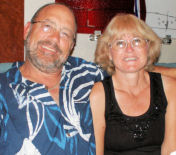The Great MisAdventures of David & JoEllen Laurita
Our Fulltime RV Adventures Across America With Toby The Cat
Great MisAdventures Summer 2011
Southwest Montana ~ Madison River Canyon ~ Earthquake Lake
July 23, 2011
Another road trip today as yesterday's long hike has us tired and sore. Today we venture down the Madison River, past Hebgen Lake and the Madison River Canyon to Earthquake Lake.
It was a beautiful moonlit night, August 17, 1959, when one of the most powerful earthquakes ever recorded on the North American continent struck the Madison River Canyon. Measuring 7.5, the quake triggered a massive landslide sending over 80 million tons of rock crashing down into the canyon, blocking the Madison River. The water backed up behind the rocks forming the new Earthquake Lake. Thermal features in nearby Yellowstone National Park were forever changed, and new features created as well.
Earthquake Lake and the Mountain That Gave Way.
In a matter of seconds, the earth's crust had dropped 19 feet. The land under Hebgen Lake tilted upward. Cabins on the north shore were immersed in water, while portions of the south shore lay high and dry. Water sloshed back and forth, while huge waves crested over Hebgen Dam. Although the dam cracked, it miraculously held. As a result of the nights' disaster, hundreds of people vacationing in the area were trapped. A total of 28 lives were lost.

Southwest Montana ~ Virginia City, Montana
We continue our road trip down the Madison River to Ennis, MT on then on to Virginia City.
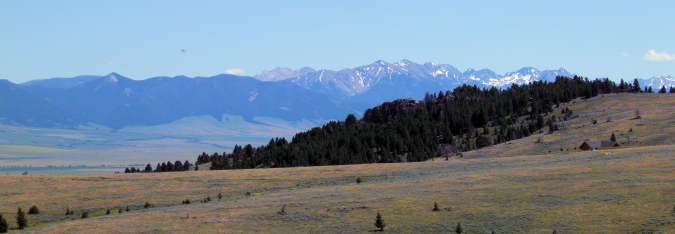
Looking East into the Madison River Valley Above Ennis, Montana to YNP.
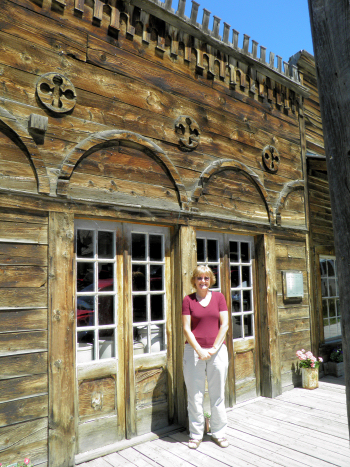
|
Rich placer diggings were discovered in Alder Gulch in the spring of 1863 and the stampede of gold seekers was on! Sluices soon lined the gulch and various "cities" blossomed forth as trading and amusement centers for free handed miners. Virginia City is the best known of these and the sole survivor. Wood sidewalks and various shops, some stocked with goods, line both sides of the main street. Today we visited this gold mining town located 90 miles from West Yellowstone. The State of Montana paid $6.5 million to buy nearly 250 buildings and their contents in Virginia City and nearby Nevada City in 1998. Most buildings are now restored in "arrested decay", with new structural support and roofs, leaving the rest of the structure just as time has aged it. Virginia City was designated a National Historic Landmark in 1961 and listed on the National Register of Historic Places in 1966. |
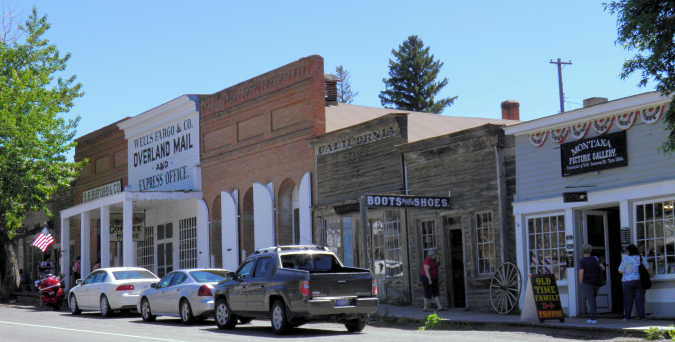
|
The US was in the midst of the Civil War, and many miners flocked to this settlement to make a living. Though a few of the miners made their fortunes in the gold fields, and even more businessmen became wealthy, there was yet another group who planned on gaining riches another way. Time after time, miners, freight haulers, and stagecoaches lost anything of value to the bandits lurking about the trails to and from Virginia City. As a result, a secret society of vigilantes was formed to stop the outlaws. Lynchings became the common event of the day as the vigilantes hunted down the road agents stringing them up in the streets. Though history now questions whether the many crimes were committed by highwaymen or perhaps the vigilantes, themselves, their is no question that the settlement was extreme in its lawlessness and violence. |
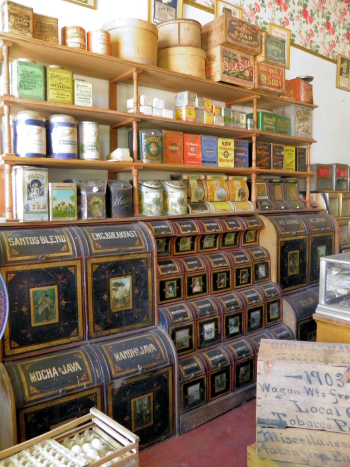
|
Stores stocked with original goods, the newspaper office loaded with tons of old printing presses, fire department hand carts waiting in the livery as well as many modern shops catering to the tourists keep us entertained. A Great MisAdventure to remember.
Next Page of The Great Yellowstone MisAdventure
Our MisAdventures
- The Great Ongoing MisAdventure
- The Great Yellowstone MisAdventure
- The Great 2011 MisAdventure
- The Great 2010 MisAdventure
- The Great Tree Sales MisAdventure
- Fall 2009
- The Great Workamping MisAdventure
- Spring 2009
- The Great 2008/09 Quartzsite MisAdventure
- The Great Mexican Cruise MisAdventure
- Fall 2008
- Summer 2008
- Spring 2008
- The Great 2007/08 Quartzsite MisAdventure
- Fall 2007
- Summer 2007
- Spring 2007
- The Great 2006/07 Quartzsite MisAdventure
- October 2006
- September 2006
- The Great 2006 Northwest MisAdventure
- The Great Caribbean Cruise MisAdventure
